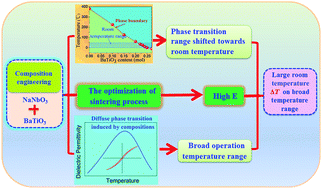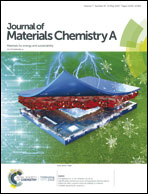Significantly enhanced room temperature electrocaloric response with superior thermal stability in sodium niobate-based bulk ceramics
Abstract
Converting electrical into thermal energy in ferroelectrics paves the way for a novel cooling technology, to open up new fields of applications. For electrocaloric refrigeration, a large temperature change (ΔT) and excellent temperature stability are highly desired. Unfortunately, a large room temperature ΔT in lead-free bulk ceramics is usually obtained at the expense of temperature stability, and vice versa, limiting their practical applications. In this work, composition engineering is carried out as an important strategy to tune the phase transition to room temperature and simultaneously induce a diffuse phase transition to achieve excellent temperature stability. A large room temperature ΔT is realized by the application of large electric fields, possibly due to the optimization of sintering process in sodium niobate based ceramics. The 0.78NaNbO3–0.22BaTiO3 ceramic is found to exhibit both a large room temperature ΔT (∼0.70 K) and superior temperature stability (±1.4% variation in ΔT from 300 K to 380 K). Those properties are superior to previously reported lead-free bulk ceramics. This work provides a guide for the development of high-performance ceramic materials such as NaNbO3–ABO3 (A = Ba, Sr and Ca; and B = Ti and Zr) for electrocaloric refrigeration. Most importantly, this work expands the applications of NaNbO3-based ceramics from electric energy storage, electrostrictive and piezoelectric applications, to a new field, i.e. solid-state refrigeration. This makes NaNbO3-based ceramics very promising multifunctional materials for device integration.



 Please wait while we load your content...
Please wait while we load your content...